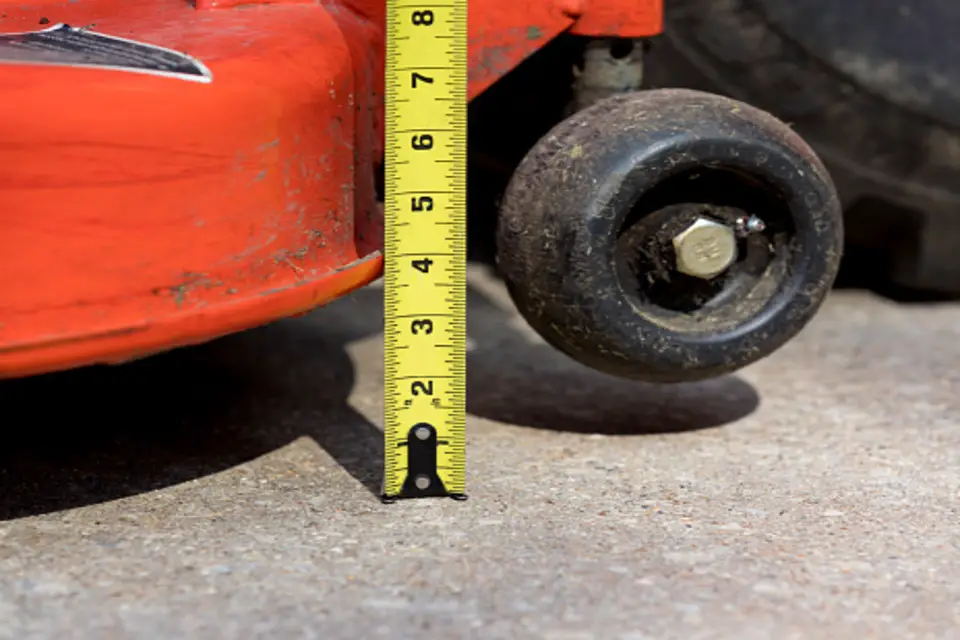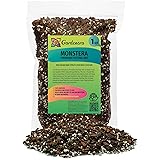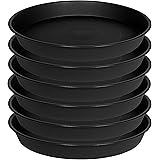Lawn scalping is referred to as the low cutting of lawn grasses to expose the stems of grass blades significantly. Typically saying scalping is an intentional process and is done by setting the mowers to the lowest possible heights. Sometimes, accidental scalping of the lawn may happen when the lawn is bumpy or uneven. In this condition, the mower can hit the lowest possible spots and will cause lawn scalping.
Overgrown and bent grass that can create thatch may also cause the lawn’s scalping because the mower tends to cut the base of blades in this situation. So, ensure you cut the tips to avoid accidental scalping of lawn in the inappropriate seasons. Scalping is an essential approach to ensure the health and sound growth of grasses as it exposes the soil to sunlight and reduces the chances of disease development and insect pest attacks.
Overseeding
The overseeding process involves multiple steps and processes and is usually done to reduce the growing grasses’ watering needs. The debris collected by scalping can be composted and used as organic fertilizer in the gardening site to ensure maximum solubility and bioavailability of nutrients. Diseases, insects, weeds, and hot weather often takes a toll on the gardening and lawn sites at the end of the summer season. Overseeding is much more than a simple scattering of seeds and waiting for their germination.
Overseeding is recommended to spread the seeds of grasses in the existing lawns. Thinning is a normal process in the lawns when grasses are matured. Overseeding is a protective and comprehensive plan and produces excellent results to maintain lawn health. However, overseeding followed by scalping is an essentially important approach to ensure maximum health, growth, and development.
Scalping helps keep the lawn steeped in vigor and youth and makes the lawn competitive without scratches. Scalping and seedbed preparation are essentially important approaches for overseeding and significantly help to reestablish the growing grasses. It is especially more critical to scattering the expensive seeds and improving the health of growing grasses by correcting them.
Why You Should Scalp Your Lawn Before Overseeding
Scalping is an essentially important approach to ensure good health and normal activities in the lawn as it causes the removal of debris, cuttings, and clippings. Resultantly the lawn soil and site are exposed to sunlight. The warming up of soil is essentially helpful to improve the soil’s physical, chemical, and biological conditions, thus growing plants and grasses can easily access the nutrients and water.
Scalping is also a recommended approach to improve the physical condition of uneven lawns before overseeding. Ideally, you should scalp after the grasses are weakened due to winter dormancy. In this way, grasses will have a good chance to rest in the spring season and quickly recover from external stresses.
Scalping requires excellent care to attain the required results as any inappropriate measures can cause significant damage. Mow the lawn properly at least once a week. Scalping should be done after careful stepwise mowing, such as mower should be adjusted at such a height that it can only remove the one by the third height of the grass blade. Grass blades must be maintained at a recommended height as suggested by horticulture specialists and agricultural extension workers.
Scalping as Preparatory Technique
Some people may consider lawn scalping as a distraction and panic, but there is nothing to worry about as it improves the health of growing grasses and lawn sites. The exposed and overgrowing tips of grasses are more prone to the disease’s development and insect pest attack and can not efficiently perform the photosynthetic processes.
Scalping is regarded as a site preparation technique for overseeding and is specifically important for the fall seasons. Rightly performed scalping offers numerous benefits and maintains a healthy transition of grasses. Moreover, it ensures uniform lawn structure and significantly enhances the overall curb and appeal of lawn and landscaping sites.
Maintenance of Mowing Height for Scalping
Low mowing must be ensured while doing lawn scalping to remove mulched grasses and clippings. This practice is helpful to allow adequate penetration of sunlight to the ground and lawn site. Sunlight is vital for soil biota and improves soil biological activities that favor good root growth and development.
Lawn scalping leaves grasses in the disadvantaged states as the grasses are already using their energy to come out of dormant stages. Removal of grass blades significantly reduces the ability of lawn to gather energy. Scalping is strongly recommended for Bermuda grass and is an excellent solution to sow seeds directly to the soil. Seeds require optimal sunlight for proper germination, and scalping can maximize the sunlight access to the seeds.
Terrain Management for Scalping
The terrain is a significantly important factor for scalping. Mowers should be specifically careful while scalping the small hills and bumps. Uneven scalping causes a non-uniformity in the grasses height and may cause additional problems for lawn management and overseeding.
Scalping According to Grass Types
Some grasses require more scalping, while some need only minimal scalping for efficient growth and development. Generally, scalping for warm-season grasses is more recommended. In comparison, cold season grasses do not require scalping until gardeners are planning to reseed the entire lawn.
Overseeding followed by scalping can significantly improve the overall appeal and curb of the lawn. Moreover, it is also helpful to improve lawn ability to fight against diseases, insects, and other abiotic stresses.
You must aerate the turf and other growing grass before overseeding and scalping is an important approach to ensure aeration. Less aggressive scalping and verticutting can yield healthier grasses that will enter the winter’s dormant conditions, having greater reserves of carbohydrates that can serve as food sources and energy for the next season.
Sand Topdressing
This is an efficient and effective strategy to replace verticutting and scalping and does not require any herbicide application and mechanical preparation to facilitate improved reseeding and grass transitions. Rather than scalping or applying burndown herbicides, top dressing is the most important and feasible approach for overseeding practices.
You can efficiently complete the topdressing application in one or two days, and it helps maintain an adequate level of soil moisture and nutritional profile. Overseeding can be immediately done after sand application. You should also irrigate multiple times a day.
The basics of overseeding and scalping are almost the same all over; however, property owners must take some proper measures according to prevailing climatic conditions. Scalping helps remove the debris and allows the proper contact of sunlight and water to the soil. Moreover, you can minimize existing lawn problems to reduce the damage and probability of insect pest attacks.
Scalping Ensures Uniform Seeding
Scalping helps to establish uniform sites in the lawns and helps to establish uniform overseeding. Moreover, it also favors the recommended seeding rates and ensures the effectiveness of handheld spreading and broadcast spreading. However, seed spreading must be ensured when the wind is calm to avoid scattering on the undesired places.
Frequently Asked Questions
Should I fertilize the scalped and overseeded lawn areas?
Fertilization is an essential approach to promote good growth and development of growing grasses, but fertilizer application must be done at the right time. Moreover, the right and calculated amount from the most appropriate sources is vital to avoid weeds’ growth. Some countries and states have banned phosphorus application to the lawns, so the use of organic fertilizers must be considered as a practical approach to minimize the effects of synthetic chemicals.
Should I regularly irrigate the scalped and overseeded lawns?
Newly overseeded and scalped lawns require constant moisture content to produce excellent and healthy biomass. However, overirrigation must be avoided to minimize the probability of root rotting and disease development on the growing grasses and surrounding plants. Light watering for one to two times a day helps prevent wilting and promotes healthy and deep roots.
Is there any need for maintenance activities after overseeding and scalping?
Gardening sites, landscapes, and lawns are sensitive places to the harsh external condition and fluctuations in the growing mediums. Therefore, owners must ensure comprehensive and regular management practices to get maximum growth.
Moreover, the management practices for shade and sun are different, and measures must be taken accordingly. Use of lawn booster is also a recommended approach to ensure the health and lush status of growing grasses and nearby shrubs, and plants.
Lawn boosters are made up of three basic components: soil enhancer, fertilizer, and seeds, and helps add sustainability and beauty to the gardening, landscapes, and lawn sites.
Is it possible to correct a scalped lawn?
Although scalping is a critical approach to improving lawns’ health status, any mismanagement or mistake may cause severe problems for lawns. Scalped patches and mismanaged areas can be easily recovered by reseeding. In these situations, scalping should be avoided for a certain period. Furthermore, a height chart for grass cutting must be followed to prevent the damage caused by scalping.
Lawnmower blades should be properly checked and sharpened to maintain the grasses’ health and vigorous growth in the lawns. Mowing must be scheduled during the cooler parts of days, and grass clippings must be returned to the ground for decomposition as they are a rich source of essential plant nutrients.
Want to know if you can mow after overseeding? This post will be helpful;
Can I Mow My Lawn After Overseeding?





